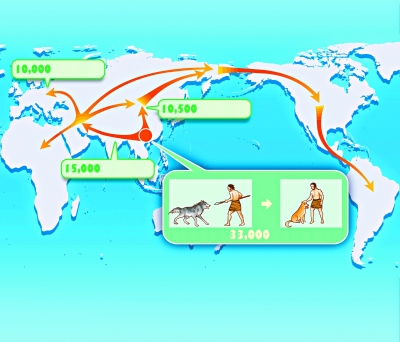Now the news continues.
China's high-speed trains were operating on tracks totaling 19,000 kilometers last year, accounting for 60 percent of the world's total. And China became the top country in the world in terms of total mileage of high-speed trains.
China invested 82 million yuan, roughly 13 million U.S. dollars, on fixed assets to operate 9,500 kilometers of newly-built train lines, including 3,300 kilometers of tracks for high-speed trains.
The railway network covers almost all cities in the country with populations in excess of 500,000.
According to the China Railway Corporation, almost 3 billion trips were made by the railway last year, up 10 percent for the third consecutive year.
Online purchases of train tickets accounted for more than 60 percent of sales.
The authority is developing a demand-based ticket allocation system to solve the problem of most seats being assigned to major stations, resulting in some tickets remaining unsold while demand in smaller stations cannot be met.
The authority is coming up with a new mechanism to allocate tickets so every station will have adequate tickets available.
A total of almost 11 billion trips were made by rail between 2011 and 2015.
China also has 815 trains bound for European countries last year, 165 percent more than in 2014.

This is NEWS Plus Special English.
Dogs were domesticated in southern East Asia 33,000 years ago and migrated to the rest of the world 15,000 years after that. These are among the findings published by Chinese scientists in an article recently.
The scientists studied whole genome sequences from a total of 58 canids, including 12 gray wolves, 27 primitive dogs from Asia and Africa, and a collection of 19 diverse breeds across the world. They found that dogs from southern East Asia have significantly higher genetic diversity compared to other populations.
The first author of the article Wang Guodong and his team are from Kunming Institute of Zoology under the Chinese Academy of Sciences in southwest China's Yunnan Province. The team spent two years collecting and comparing the genome samples, and was able to map the spread of domestic dogs across the earth for the first time.
In the article, the history of dog domestication is often depicted as a two-stage process. Primitive dogs were first domesticated from their wild ancestors, the gray wolves. In the second stage, the primitive forms were further selected to form many dog breeds with specialized abilities and shapes.
Wang says that considering the extremely close relationship between dogs and humans, the study on dogs can hopefully shed some light upon social activities and the migration history of humans.












